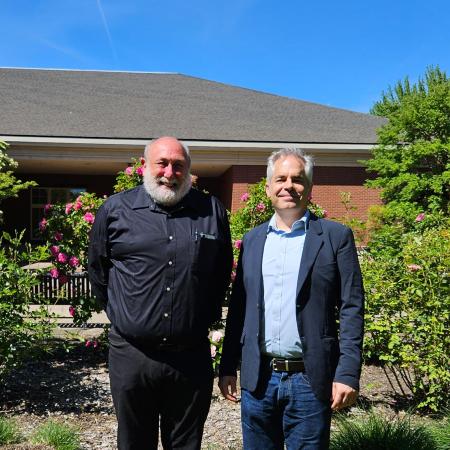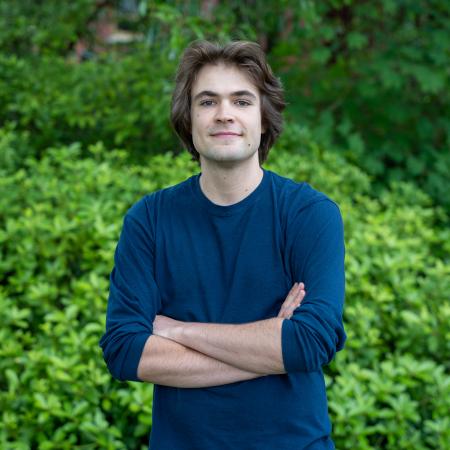Tim Costa’s path took him from pure mathematics through the world of semiconductors to multiscale porous media and nonlocal mechanics. His academic career began in political science, but his underlying passion for mathematics brought him back to school as a post-bacc in 2010. This social science background proved useful to him: "My background in the softer sciences has been a major strength," Tim believes. "It has provided me with the skills to communicate my work to those outside my specific field, which is critical to interdisciplinary collaboration." Still, he found himself drawn to a career in mathematics research: "I knew that ultimately I wanted my work to make a tangible difference in the world."
Tim entered the Mathematics graduate program in 2011 with enough depth in undergraduate mathematics through coursework at the University of Oregon to guarantee success in the core classes. However, he had a rather modest exposure to the breadth of mathematics and in particular to the opportunities in applied mathematical modeling. Soon after arriving at OSU, Tim became very interested in a career involving Computational Mathematics. "It became very clear that computational and applied mathematics, and in particular numerical analysis, contained the blend of mathematical beauty and real-world impact that matched my career goals," Tim says.
An opportunity arose for Tim to be involved in an interdisciplinary project: the NSF "SOLAR: Enhanced Voltaic Efficiency Through Heterojunction Assisted Impact Ionization," led by Physics Professor Stephen Kevan, in which Professor Malgorzata Peszynska and Physics Professor Guenter Schneider were co-Pis. Under Prof. Peszynska’s direction, Tim dove headfirst into self-guided study of basic physical principles governing the physics of semiconductors. He picked up enough computational skills and basic numerical analysis skills in his coursework to be productive, and within a few months he joined the SOLAR project. A year later, Tim had contributed already to a specific subproject with a particular mathematical problem due to the so-called "tyranny of scales." A popular physical model for the heterojunction involved accounting for a jump in one of the variables and in a flux, while all the known mathematical theory required continuity. This exciting challenge was the first step in the collaborative study, which yielded various publications and conference invitations, the latter of which Tim finds one of the "great rewards" of his time at OSU.
Guided by his long-term goals, Tim also pushed himself to become acquainted with the latest computing technology. In fact, Tim recently founded a company called Numerical Solutions with his brother, Anthony. The Numerical Solutions consulting group works with clients to develop scientific questions, numerical methods, and software implementations for their efficient solution.
As the SOLAR project came to an end, Tim switched to another multiscale application, on flow and transport in porous media. Though clearly different, the project was in an abstract way quite similar, as it dealt with multiple spatial and time scales, and with an inability to handle these with standard techniques. Here the challenge included learning enough of the enormous background to make meaningful contributions. Prof. Peszynska is pursuing a new direction of hybrid modeling in which Tim is making progress, combining pore network modeling with microfluid modeling at porescale and deriving effective models at macro scale.
By the time he graduates next year, Tim will have published (at least) 5 papers, presented at 9 national and international conferences, spent a summer at Sandia National Laboratories, worked collaboratively with peers in other disciplines. And he’s been offered his "dream job" nine months prior to his defense date. Tim says, "I'll be leaving OSU having accomplished everything I had hoped to accomplish in graduate school, and more."



